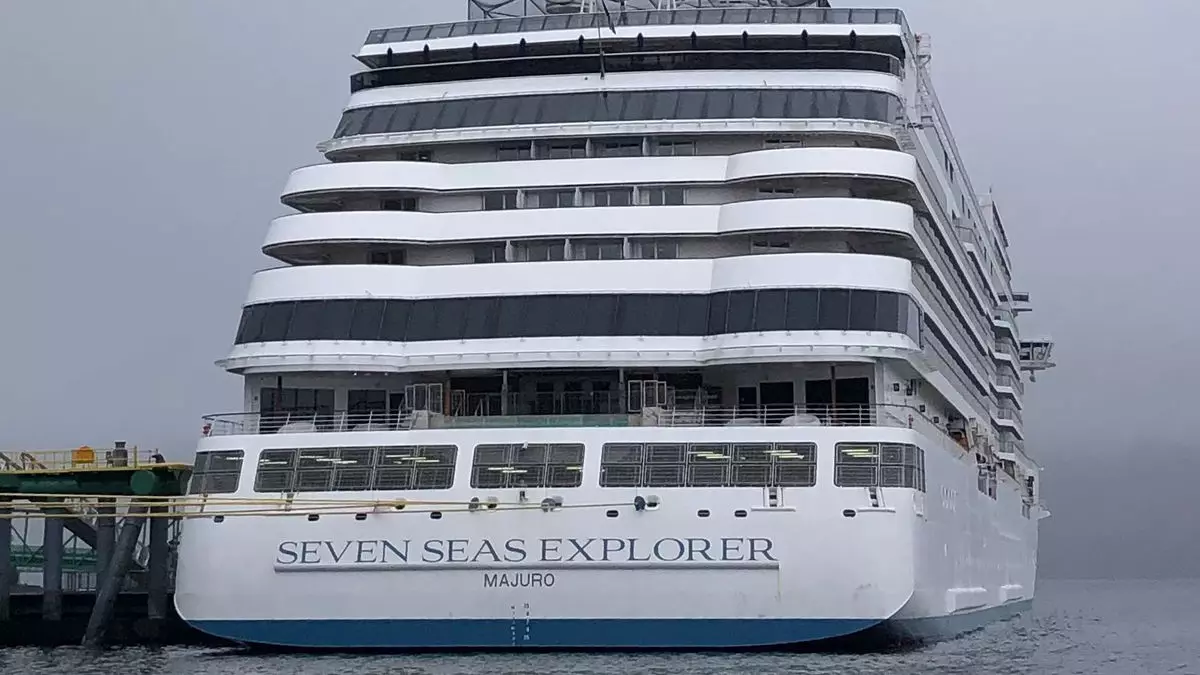When the Seven Seas Explorer made its inaugural voyage nearly nine years ago, it captured the attention of the luxury cruise industry with its extravagant Regent Suite—boasting a staggering 4,400 square feet of opulence. Touted as the largest suite afloat, it set a new benchmark for high-end amenities and luxury experiences at sea. Today, as the vessel continues to sail the waters of extraordinary indulgence, one cannot help but question how its allure has evolved amidst an increasingly crowded luxury cruise market. The introduction of sister ships, such as the Seven Seas Splendor and Seven Seas Grandeur, has broadened the appeal of Regent Seven Seas Cruises while also shifting the focus away from the Explorer’s originally singular prestige.
The Seven Seas Explorer was designed as a beacon of modern luxury, appealing to affluent travelers who sought not only comfort but also a grand lifestyle at sea. However, in the years following its launch, the novelty of having the largest suite quickly faded as competitors emerged with similar offerings. What was once a unique selling proposition has now transformed into a category, as multiple ships now offer accommodations and amenities that rival the Regent Suite. Instead of being a solitary star, the Explorer is now part of a constellation of luxury options, each vying for the attention of potential cruisers.
Interestingly, the art collection, once a focal point of the ship’s appeal, no longer garners the same level of awe. While the presence of recognizable pieces, such as a Picasso located near the entrance of the Prime 7 steakhouse, remains a pleasant surprise for guests, the preoccupation with such masterpieces has dwindled. Nowadays, the conversation tends to center around Regent’s all-inclusive offerings rather than the cultural significance of the art on display.
Regent’s former CEO, Frank Del Rio, famously expressed a desire for the Seven Seas Explorer to embody timelessness, anticipating that the ship would remain a relevant force in the luxury market for decades to come. The reality, however, suggests a more complex narrative. Although the aesthetics—gleaming gold fixtures and dramatic onyx panels—retain their charm, the originality that once characterized the ship is arguably diluted in the expansive landscape of luxury cruising. This evolution raises questions regarding the ship’s identity as it adapts to the ever-changing demands and expectations of discerning travelers.
On a recent five-night journey through Alaska, the inherent luxury of the Seven Seas Explorer was undeniably present. From the moment guests are welcomed by an oversized chandelier in the lobby, the ship effectively conveys its opulent ethos. However, what becomes increasingly apparent is how the focus has shifted from merely providing extravagant amenities to crafting unforgettable experiences. Attention has clearly migrated toward service quality, culinary excellence, and immersive enrichment activities.
The culinary options aboard the Seven Seas Explorer are worth noting, particularly the pan-Asian Pacific Rim specialty restaurant that has garnered praise for its innovative menu and presentation. The Sette Mari at La Veranda dining venue exemplifies the ship’s commitment to excellent gastronomy, seamlessly blending quality with accessibility—albeit with occasional waits that are well worth the reward. Similarly, the enrichment roster boasts a variety of lectures and presentations, with destination experts like Terry Breen providing captivating insights into Alaska’s rich history and wildlife.
Evening entertainment also caters to sophisticated tastes, featuring acts like comedian John Fast, whose humor resonates with the ship’s demographic. The exploration of diverse cultures continues in the production shows, including “Paradis,” which offers glimpses of French cabaret, showcasing both talent and historical nuances that elevate the whole cruising experience.
As the Seven Seas Explorer continues its journey, it is evident that the ship stands at a pivotal moment in Regent’s history—a reflection of the brand’s evolution and distinct identity. Prior to the Explorer, the cruise line had not launched a new vessel in 13 years, and its legacy had become somewhat stagnant. With its introduction, however, Regent entered a new era under Norwegian Cruise Line Holdings, demonstrating a commitment to growth and adaptation in the luxury sector.
With ambitious plans for two additional ships in 2026 and 2029, Regent is poised to solidify its position in the increasingly competitive luxury cruise market. The Seven Seas Explorer remains a symbol of this transformation, embodying not just the enduring qualities of luxury cruising but also the adaptability necessary to thrive amid a sea of high-end competitors.
While the initial fervor surrounding the Seven Seas Explorer has mellowed, its essence of luxury—reflected in both the experiences it provides and the service it delivers—remains a noteworthy pillar in the realm of premium cruising.


Leave a Reply